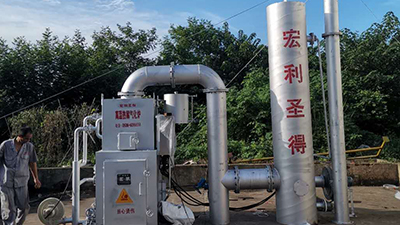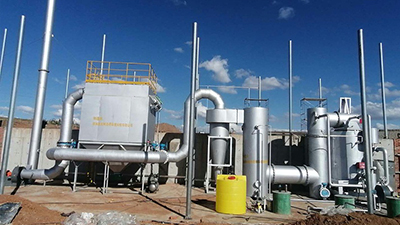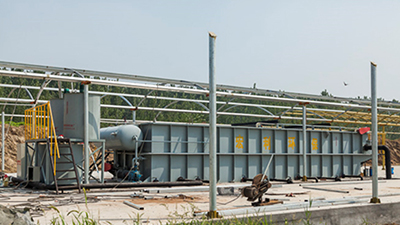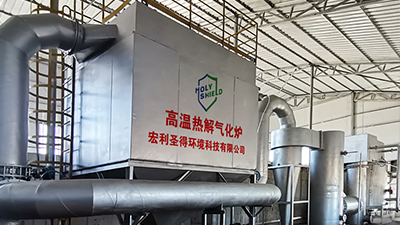[Harm of livestock and poultry breeding sewage to the environment]
The amount of sewage discharged by large-scale farms every day is large and concentrated, and the sewage contains a large amount of pollutants, such as heavy metals, residual veterinary drugs and a large number of pathogens. Serious pollution of ecological environment and farmland.
1.Pollution of water bodies
The aquaculture sewage treatment belongs to the high-concentration organic sewage rich in a large number of pathogens. It is not suitable for direct discharge into the water body or storage location. It is washed into the water body by rainwater, which may cause serious deterioration of the surface water or groundwater quality.
2. Impact on farmland and crops
The livestock and poultry breeding sewage treatment contains a lot of nutrients such as nitrogen, phosphorus, and potassium. If it can be used reasonably, it can effectively improve soil fertility, improve the physical and chemical properties of soil, and promote the growth of crops. However, if it is applied directly, continuously, and excessively without any treatment, it will cause adverse effects on the growth of soil and crops, such as causing crops to grow tall, turn green, and lodging, which will greatly reduce the yield, delay the maturity period, and affect the growth of subsequent crops. production, etc.
3. Mineral element and heavy metal pollution
On the one hand, about 75% of the inorganic phosphorus added to livestock and poultry feeds is phytate phosphorus. Because phytate phosphorus cannot be absorbed and utilized by animals, it is directly excreted from the body, causing pollution. On the other hand, trace element additives such as high copper, high iron, and high zinc are generally used in feed factories and farms. Due to the low absorption rate and utilization rate of these metal elements, they are easily excreted into the environment with feces. A major environmental hazard.
4. Contamination of Residual Veterinary Drugs
First, drug-resistant pathogens or mutant pathogens in livestock and poultry are continuously produced and discharged into the environment; secondly, livestock and poultry continuously excrete these antibiotics or their metabolites into the environment, so that drug-resistant pathogens and mutant pathogens in the environment are continuously produced. . These two in turn stimulate producers to increase the dosage of drugs and update the varieties of drugs, which creates a vicious circle of "drugs pollute the environment → drug-resistant or mutated pathogens are produced → increase the dosage of drugs → the environment is further polluted". In addition, after the drug residues in livestock and poultry products enter the environment, they may be converted into environmental hormones or precursors of environmental hormones, thereby directly destroying the ecological balance and threatening human health.
[Basic methods and steps of livestock and poultry farming sewage treatment]
At home and abroad, the treatment methods of large-scale livestock and poultry farm manure mainly include two categories: comprehensive utilization and standard discharge. For the treatment of up-to-standard discharge, that is, solid-liquid separation - anaerobic digestion - aerobic treatment. However, for the aquaculture industry in my country, which is operating at a low profit, the investment required to build this type of manure treatment facility is too large and the operating cost is too high. Therefore, it has become the key to solve the pollution of the aquaculture industry to find a method for treating manure in the aquaculture industry with less investment in facilities, low operating costs and efficient treatment.

1. Solid-liquid separation
No matter what system or comprehensive measures are used to treat sewage from livestock and poultry farms, solid-liquid separation must be carried out first. This is an indispensable process link. Its importance and significance are mainly: first, the sewage discharged from general farms The content of suspended solids in the medium is very high, up to 160000mg/L, and the corresponding organic content is also very high. Through solid-liquid separation, the pollutant load in the liquid part can be greatly reduced

2.Shallow pool sedimentation
Set up many dense inclined tubes or inclined plates in the settlement area, so that the suspended impurities in the water are precipitated in the inclined plates or inclined tubes, the water flows upward along the inclined plates or inclined tubes, and the separated sludge flows along the inclined plates under the action of gravity (Tube) slide down to the bottom of the pool, and then discharge centrally. This kind of pond can improve the sedimentation efficiency by 50% to 60%, and can increase the processing capacity by 3 to 5 times on the same area. The inclined tube precipitator with different flow rates can be designed according to the test data of the original wastewater, and a coagulant is generally added during use. The inclined tube precipitation water purification method is formed by installing an inclined tube with an inclination angle of 60 degrees above the sludge suspension layer. The bottom surface area accumulates into a thin mud layer, which slides back to the mud slag suspension layer by gravity, and then sinks into the mud collecting bucket. It will be discharged into the sludge tank by the sludge discharge pipe for further treatment or comprehensive utilization. The supernatant gradually rises to the water collection pipe for discharge, which can be directly discharged or reused.

Holy Shield is a research and development manufacturer specializing in sewage and garbage treatment equipment. It has rich experience and successful cases. It mainly focuses on rural sewage sorting, slaughtering sewage treatment, breeding sewage treatment, food sewage treatment, and domestic medical sewage treatment. If you If there is sewage to be treated, please send an email to consult, we will give you the best treatment plan according to your actual situation.





